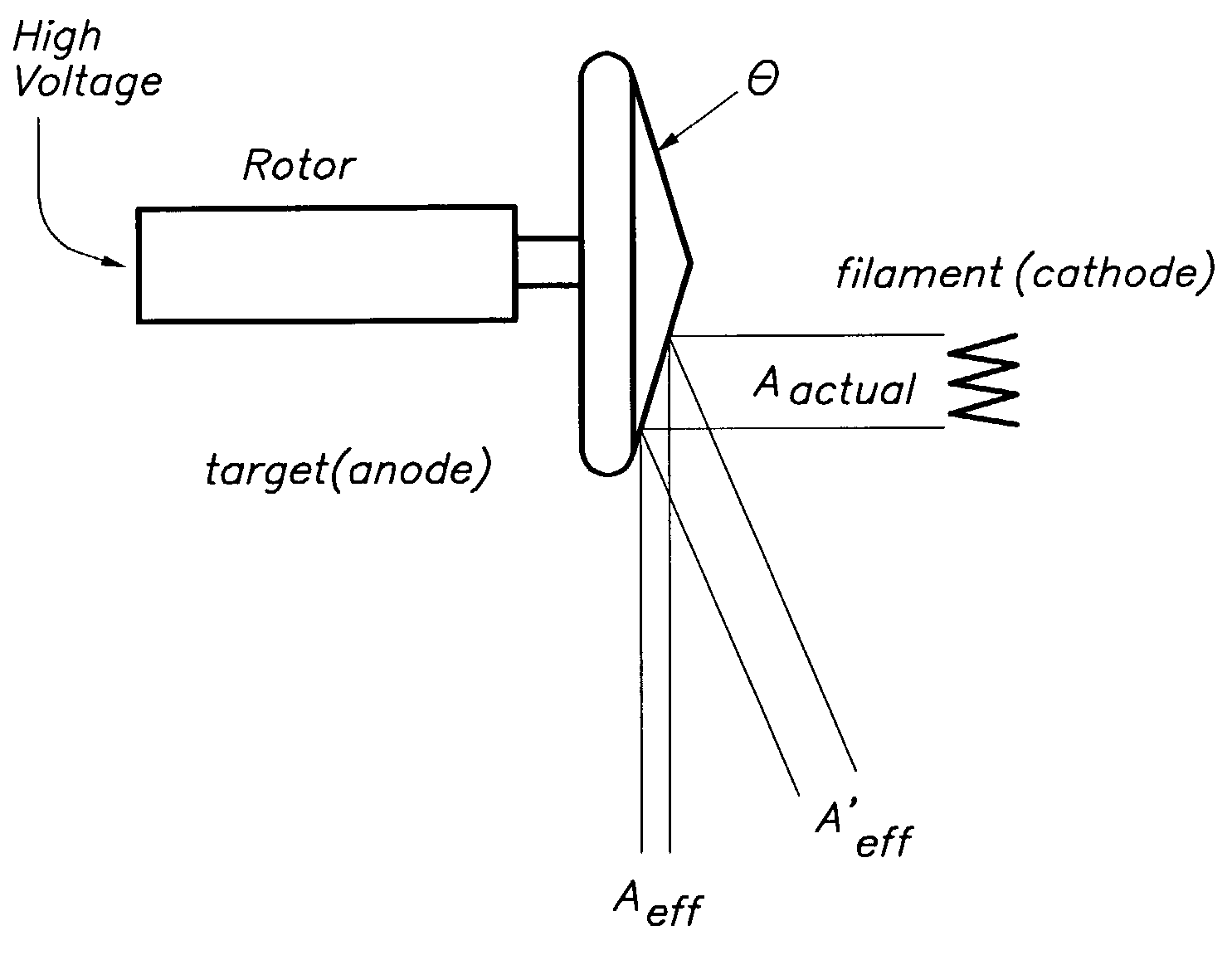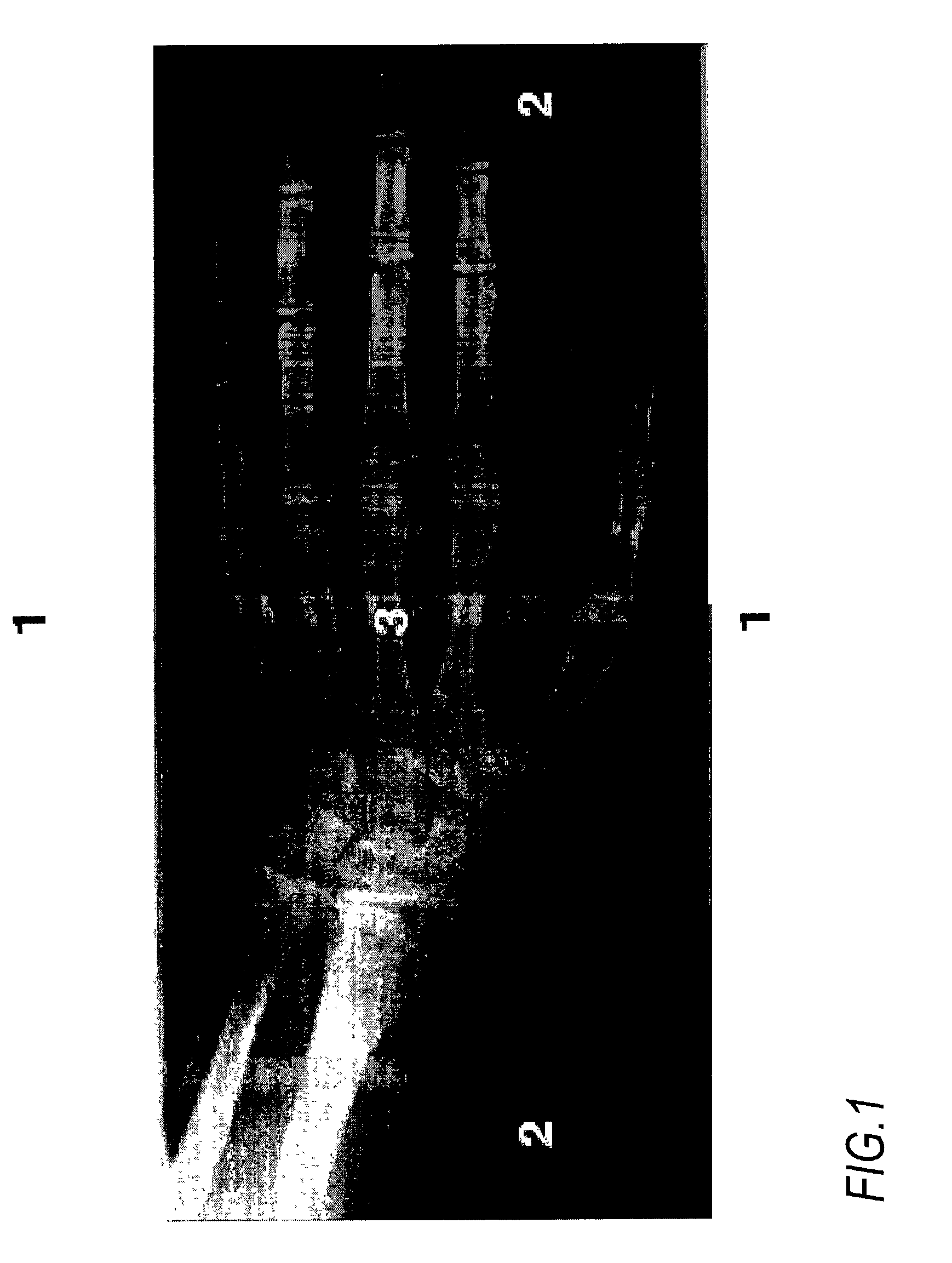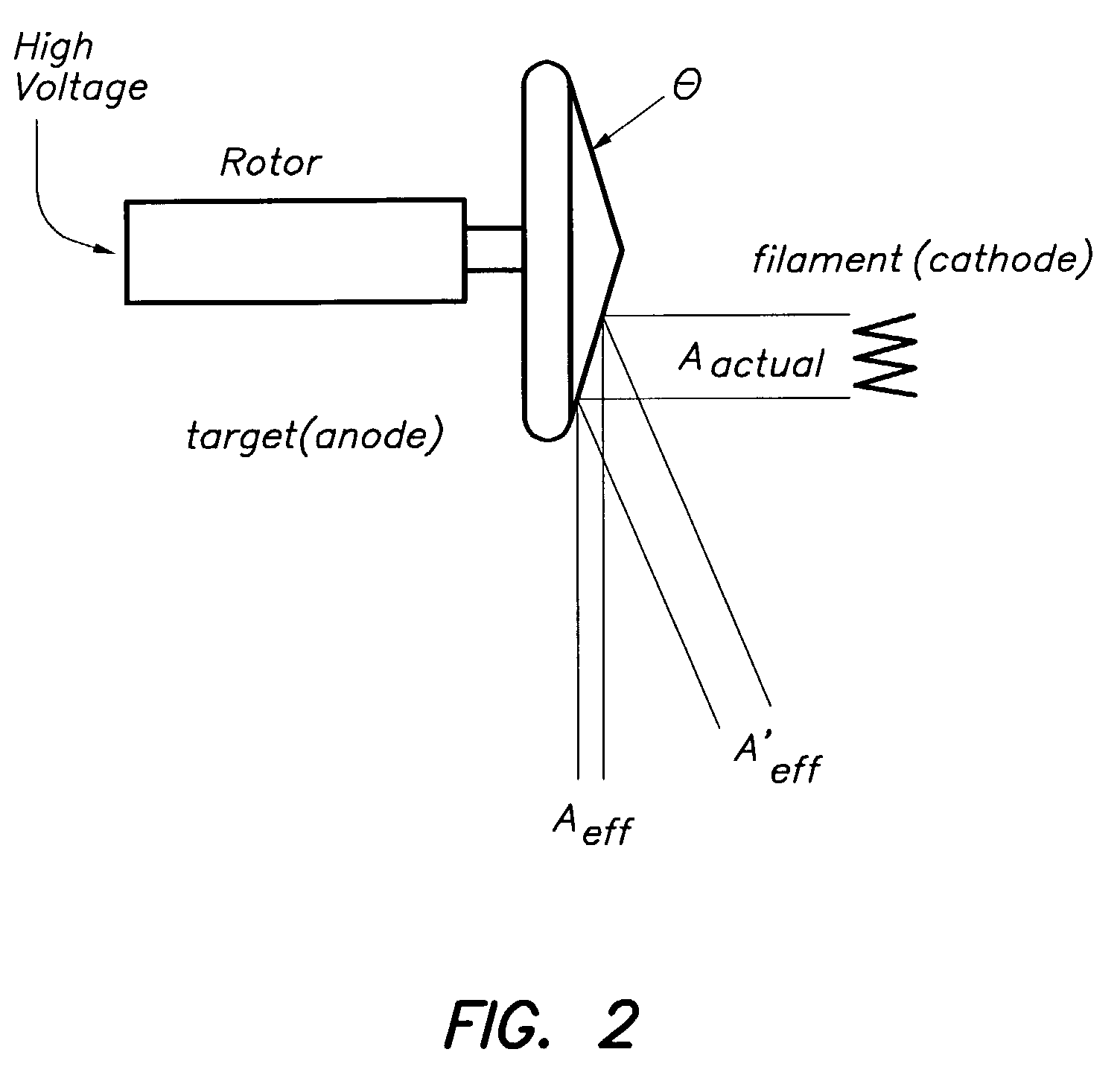Retrospective correction of inhomogeneities in radiographs
a radiograph and inhomogeneity technology, applied in image data processing, duplicating/marking methods, printing, etc., can solve the problems of collimation areas unsuitable for estimation of correction values, and the dynamic range of irradiation has been reduced
- Summary
- Abstract
- Description
- Claims
- Application Information
AI Technical Summary
Benefits of technology
Problems solved by technology
Method used
Image
Examples
first embodiment
[0035]A mathematical model for the Heel effect can be derived from the simplified one-dimensional model of the anode and beam geometry depicted in FIG. 4. In the coordinate system (p,z), with p along the anode-cathode axis and z along the vertical direction, the X-rays can be taught off to originate within the anode at point ω(0,0), at a distance Dave from the anode surface S. Consider the ray R at an angle φ from the vertical within the plane (ω,S) that hits the recording device at point (p,Dis) with Dis the distance between the X-ray source and the recording device and
[0036]tanϕ=pDis.
The distance r traveled by R through the anode is given by
r=|ξ−ω|=√{square root over (pR2+zR2)} (1)
[0037]with ξ(pR,zR) the intersection of R with S which can be found by solving the system of equations:
S: pR=Dave−tan θ.zR
R: pP=tan φ.zR (2)
[0038]Hence,
[0039]r(p)=Davecosθsin(ϕ+θ)=Dave1+(pDis)2tanθ+pDis(3)
[0040]The radiation received on the recording device is
M(p)=Io.e−μ.r(p) (...
second and third embodiment
[0059]Image Formation
[0060]In ideal circumstances, the image formation process of diagnostic digital X-ray images is usually well described by a multiplicative model yielding an intensity-uniform image U(x,y):
U(x,y)=I.O(x,y)[0061]where O(x,y) represents the object in the image. In diagnostic X-ray images, the most important contributing process of the object is the linear attenuation of the X-rays by the bone and soft tissue
[0062]O(x,y)=ⅇ-∫∞ζμ(r)ⅆr
[0063]μ is the linear attenuation coefficient along the path between the origination X-ray at position a and the recording device ζ. However, nonuniform illumination I=I(x,y), uneven sensitivity of the recording device and inhomogeneous sensitivity of the phosphors for readout, introduce unwanted intensity modulations in the acquired image N(x,y) described by function f
N(x,y)=fx,y,U(U(x,y)) (10)
[0064]In the second and third embodiment the Heel effect is again examined as a very important source of nonuniform illumination. Reference is...
fourth embodiment
[0127]In a fourth embodiment according to the present invention, a statistical mixture model of the image is generated based on a plurality of K image regions.
[0128]Each of these regions or classes may physically correspond to e.g. bone, soft tissue and direct exposure area.
[0129]In the assumption of a normal mixture model, each class is represented by three unknown parameters: the proportion πk of image pixels, the mean value μk and the variance σk2.
[0130]The set ψ collectively comprising all unknown parameters becomes:
ψ={π1, . . . ,πK,μ1, . . . ,μK,σ12, . . . ,σK2}
[0131]The subset of parameters pertaining to class k is denoted as
ψk={πk,μk,σk2}
[0132]The image intensity histogram, denoting the probability distribution that a pixel i has intensity yi is therefore a Gaussian mixture model
[0133]f(yi❘ψ)=∑k=1Kπkfk(yi❘ψk)=∑k=1Kπk12πσk2exp(-(yi-μk)22σk2)i=1,…,N
The Basic EM Algorithm
[0134]The classical analytical method to estimate the parameter ψ is to maximise the log-like...
PUM
| Property | Measurement | Unit |
|---|---|---|
| inner angles | aaaaa | aaaaa |
| inner angles | aaaaa | aaaaa |
| direct exposure areas | aaaaa | aaaaa |
Abstract
Description
Claims
Application Information
 Login to View More
Login to View More - R&D
- Intellectual Property
- Life Sciences
- Materials
- Tech Scout
- Unparalleled Data Quality
- Higher Quality Content
- 60% Fewer Hallucinations
Browse by: Latest US Patents, China's latest patents, Technical Efficacy Thesaurus, Application Domain, Technology Topic, Popular Technical Reports.
© 2025 PatSnap. All rights reserved.Legal|Privacy policy|Modern Slavery Act Transparency Statement|Sitemap|About US| Contact US: help@patsnap.com



